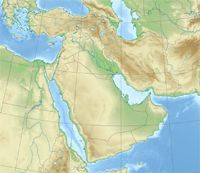Gulf States' Rise in Heart Disease Linked With Urbanization, Cultural Habits

The European Society of Cardiology announced on Wednesday that rapid urbanization and the Gulf States’ “deep-rooted” cultural habits play a part in their high rates of cardiovascular disease.
"We're sitting on a time bomb," said Professor Hani Najm, Vice-President of the Saudi Heart Association.
"We will see a lot of heart disease over the next 15 to 20 years. Already, services are saturated. We now have to direct our resources to the primary prevention of risk factors throughout the entire Middle East."
According to the World Health Organization, up to 60 percent of males in Arab countries and up to 70 percent of females are overweight and obese.
Najm explained that prevalence rates of diabetes and hypertension are around 25 percent, while inactivity rates among the over-20s are even higher.
However, the explanation is not just rapid urbanization and ubiquitous travel by car, said Najm, “There are, in addition, many social and cultural barriers to exercise, especially among women, who find it difficult to find the opportunities and encouragement to take organized exercise.”
He said that the ‘waterpipe,’ commonly known as hookah or shisha, is now said to be used by up to 34 percent of Middle Eastern adolescents, which suggests that there is further evidence that the Middle Eastern cultural heritage presents another growing risk factor in the region's battle against heart disease.
Despite the belief that the use of hookah may offer a bridge to cigarette smoking, recent reports suggest that its "harmful effects are similar to those of cigarettes."
According to a recent study by the Gulf Registry of Acute Coronary Events, GRACE, 38 percent of patients registered were cigarette smokers and 4.4 percent were waterpipe smokers.
The study of 6,701 consecutive acute coronary patients in Bahrain, Kuwait, Qatar, Oman, United Arab Emirates, and Yemen, found that the waterpipe smokers were older than the cigarette smokers and more likely to be female.
However, the authors explained that despite the small use of hookah among the participants, many studies reported a larger use of hookah throughout the region with a growing number of adolescent users.
Najm noted that a 2004 study found that 22 percent of men in two villages of Egypt reported current or past use of waterpipes, and the habit is increasingly evident even among student communities in the USA, Canada and Germany.
"Although the prevalence of waterpipe smoking in the current registry was low (4.4 percent), with the current trend of popularity it is expected that physicians and specifically cardiologists across the globe can expect increasing number of their patients with Acute Coronary Syndromes to be waterpipe tobacco smokers," reported GRACE investigators.
GRACE investigators noted that "while smoking a single cigarette might produce a total of approximately 500–600 ml of smoke, a single waterpipe use episode might produce about 50,000 ml of smoke."
According to GRACE, the belief that any harmful effect of waterpipe smoking is less than that of tobacco smoking is mistaken.
While prevention programs are being developed, Najm still feels that smoking policies of many countries including Saudi Arabia are not fully enforced and more efforts need to be addressed.
"The basic message still needs to be delivered," he said.
"With such a high prevalence of risk factors in our populations, especially among the young, I still expect rates of cardiovascular disease to increase even further over the next 20 years."



























